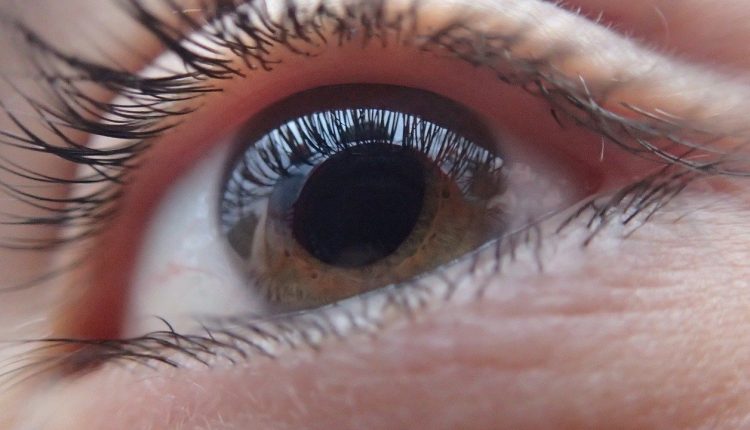
What is ocular pterygium and when surgery is necessary
With an almost unpronounceable name, pterygium is an eye disease characterised by an irregular whitish growth on the corneal membrane
What is pterygium
To better understand pterygium, we must start with the concept of the conjunctiva.
The conjunctiva is the transparent membrane that covers the eyeball and is reflected, at the level of the superior and inferior conjunctival fornices, on the inner surface of the eyelids, up to the ciliary border.
The bulbar conjunctiva ends in the transition zone from the white sclera to the transparent cornea, called the limbus.
Pterygium is a degenerative disease involving the cornea and conjunctiva
It appears as a yellowish-white membrane composed of fibrous tissue and blood vessels that commonly originates from the nasal conjunctiva (inner side of the eye).
Triangular in shape with a base at the limbus, its size can increase towards the centre of the cornea and impair vision.
It usually affects adults, especially males in the 20-50 age group.
Pterygium and pinguecula: what is the difference?
Pterygium should be distinguished from pinguecula, a small yellowish excrescence near the limbus that does not grow on the cornea.
The pinguecula is most often located on the nasal side or even on the temporal side (bilateral).
Symptoms of pterygium
Pterygium may be asymptomatic, but in some cases the subject may experience
- an unpleasant foreign body sensation
- burning;
- sometimes tearing.
If inflamed, it changes colour and tends to redden.
It may remain stationary and confined to the corneal periphery or slowly progress towards the centre of the cornea.
Causes of pterygium
The formation of pterygium has been related to:
- hereditary predisposition
- repeated irritative or traumatic stimuli;
- prolonged and unprotected exposure to sunlight (UV radiation).
This is why it is much more common in populations living in equatorial areas and in those who work outdoors.
Hence the importance of methodically wearing sunglasses to protect our eyes from sun damage.
How pterygium is treated
Medical therapy is essentially symptomatic and consists of the use of eye drops or ophthalmic gels.
Those based on cortisone or non-steroidal anti-inflammatory drugs (NSAIDs) reduce inflammation and thus irritation, but cannot be used for long periods.
Artificial tears can only give a temporary benefit and do not affect the progression of the pterygium.
When to operate and how the procedure works
When the pterygium invades the pupil area, visual obstruction occurs and removal remains the only effective solution.
Especially in forms with a marked inflammatory component and a tendency to proliferate not only on the surface, but to infiltrate the cornea deeper.
Treatment of pterygium is therefore surgical.
The operation is performed on an outpatient basis and under local anaesthesia.
The tendency of this affection is to recur.
For this reason, in order to minimise the risk of the pterygium reforming, a small graft of conjunctival tissue taken from the same eye is performed after its removal.
What to do after the operation
After the operation is prescribed
- an antibiotic and cortisone eye drops to be instilled in the operated eye for 1 week;
- 10-15 days of surface cortisone eye drops;
- use of artificial tears for at least 1 month.
Read Also
Emergency Live Even More…Live: Download The New Free App Of Your Newspaper For IOS And Android
Blepharitis: What Is It And What Are The Most Common Symptoms?
Stye, An Eye Inflammation That Affects Young And Old Alike
Blurred Vision, Distorted Images And Sensitivity To Light: It Could Be Keratoconus
Stye Or Chalazion? The Differences Between These Two Eye Diseases
Blepharoptosis: Getting To Know Eyelid Drooping
Lazy Eye: How To Recognise And Treat Amblyopia?
Corneal Keratoconus, Corneal Cross-Linking UVA Treatment
Keratoconus: The Degenerative And Evolutionary Disease Of The Cornea
Burning Eyes: Symptoms, Causes And Remedies
What Is The Endothelial Count?
Ophthalmology: Causes, Symptoms And Treatment Of Astigmatism
Asthenopia, Causes And Remedies For Eye Fatigue
CBM Italy, CUAMM And CORDAID Build South Sudan’s First Paediatric Eye Department
Inflammations Of The Eye: Uveitis
Myopia: What It Is And How To Treat It
Presbyopia: What Are The Symptoms And How To Correct It
Nearsightedness: What It Myopia And How To Correct It
Blepharoptosis: Getting To Know Eyelid Drooping
Lazy Eye: How To Recognise And Treat Amblyopia?
What Is Presbyopia And When Does It Occur?
Presbyopia: An Age-Related Visual Disorder
Blepharoptosis: Getting To Know Eyelid Drooping
Rare Diseases: Von Hippel-Lindau Syndrome
Rare Diseases: Septo-Optic Dysplasia
Diseases Of The Cornea: Keratitis
Blepharitis: The Inflammation Of The Eyelids
Blepharitis: What Is It And What Does Chronic Inflammation Of The Eyelid Entail?



